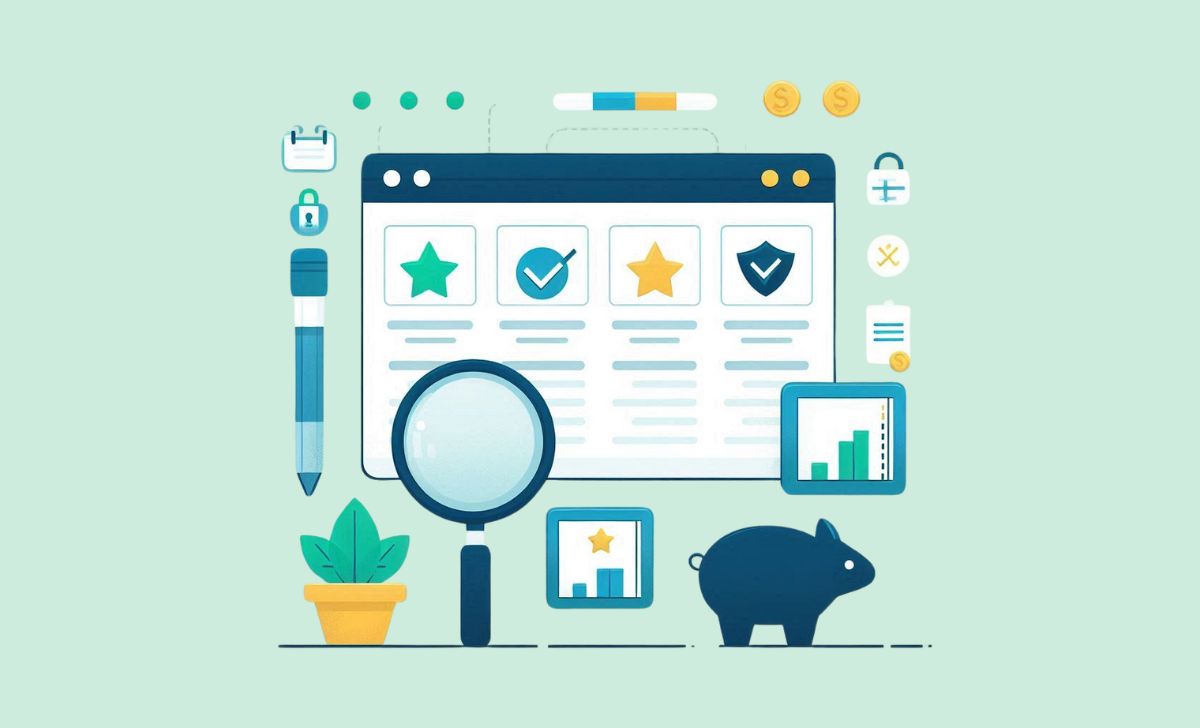A portfolio tracker helps you monitor, analyze, and manage assets like stocks, crypto, and ETFs on a single platform. This tool provides real-time data updates, syncs multiple accounts, sends price alerts, and supports investment performance analysis.
Using a portfolio tracker saves time, reduces errors, and helps optimize your returns. For more details and to find the right tool for your needs, keep reading the article from TOPCOIN9 below!
What Is a Portfolio Tracker?

A portfolio tracker is a digital tool or software that allows investors to consolidate, monitor, and manage all their investments in one place, providing a unified view of assets such as stocks, bonds, mutual funds, and cryptocurrencies (Wikipedia, 2019). By aggregating investment data, portfolio trackers help users track performance, analyze returns, and assess risk across their entire portfolio in real time (Wikipedia, 2019; University of Oregon, 2024).
Key features of portfolio trackers include:
- Centralized monitoring: View and organize all investment holdings from multiple accounts and asset classes in a single dashboard (Wikipedia, 2019).
- Performance analysis: Track gains, losses, and returns over various time periods, enabling informed investment decisions (Wikipedia, 2019).
- Risk assessment: Analyze asset allocation and diversification to manage portfolio risk effectively (Wikipedia, 2019).
- Real-time updates and alerts: Receive notifications on price changes, portfolio movements, and market news to stay up to date (Wikipedia, 2019).
Many crypto investors use portfolio trackers to follow the latest ethereum price, set custom alerts, and make timely decisions based on real-time market data. Monitoring ethereum price is especially important in volatile markets, as ETH is one of the most influential cryptocurrencies and often impacts the entire crypto portfolio.
Portfolio trackers are essential for both individual and institutional investors, as they simplify investment management and support strategic decision-making (Wikipedia, 2019; University of Oregon, 2024). For best results, choose reputable portfolio tracking tools and regularly review your portfolio’s performance and allocation (Wikipedia, 2019).
With an understanding of what a portfolio tracker is and its role in digital asset management, let’s move on to examine the core features that make these tools essential for investors and traders.
Core Features of Portfolio Trackers

Portfolio trackers are digital tools that enable investors to monitor, analyze, and manage their investments across various asset classes in a centralized platform (Wikipedia, 2019; University of Oregon, 2024).
Centralized Asset Monitoring
Trackers consolidate holdings from multiple accounts and asset types such as stocks, bonds, mutual funds, ETFs, and cryptocurrencies into a single dashboard for easy oversight and management (Wikipedia, 2019; Financial Navigator, 2011).
Real-Time Performance Tracking
Users can view up-to-date portfolio values, daily gains or losses, and historical performance metrics, allowing for informed decision-making and timely rebalancing (Wikipedia, 2019; Google Finance, 2020).
Comprehensive Reporting and Analytics
Advanced trackers provide detailed reports on returns, asset allocation, risk exposure, and benchmarking against market indices, supporting both individual and institutional investors (Financial Navigator, 2011; University of Oregon, 2024).
Custom Alerts and Notifications
Many platforms offer customizable alerts for price changes, portfolio movements, or relevant market news, helping users stay proactive about their investments (Google Finance, 2020).
Integration and Data Import
Portfolio trackers often support integration with brokerage accounts, banks, and third-party financial tools, enabling automatic data import and minimizing manual entry (Financial Navigator, 2011; EPA, 2024).
Security and Privacy Controls
Leading trackers implement strong security features, such as multi-factor authentication and encrypted data storage, to protect sensitive financial information (EPA, 2024).
In addition to financial data security, some portfolio tracker platforms recommend using an av scaner to periodically check your device for malware or viruses. An av scaner (anti-virus scanner) helps ensure that your investment data and login credentials remain safe from cyber threats, especially when accessing portfolio tools on multiple devices.
Mobile and Cross-Platform Access
Most modern trackers are accessible via web and mobile applications, allowing users to manage portfolios anytime, anywhere (Wikipedia, 2019).
These core features, validated by academic and government sources, make portfolio trackers essential tools for effective investment management and strategic financial planning (Wikipedia, 2019; Financial Navigator, 2011; EPA, 2024).
After highlighting the main features, it’s important to consider the benefits that portfolio trackers bring to users seeking efficiency and control over their investments.
Benefits of Using a Portfolio Tracker

Portfolio trackers provide investors with a unified platform to monitor, analyze, and manage diverse investments, delivering significant advantages for effective financial management (Wikipedia, 2019; University of Oregon, 2024).
Centralized Oversight
Investors can view all holdings stocks, bonds, mutual funds, ETFs, and cryptocurrencies in one place, making it easier to track performance and allocation without switching between multiple platforms (Wikipedia, 2019; University of Oregon, 2024).
Real-Time Performance Monitoring
Trackers offer up-to-date valuations, daily gains or losses, and historical performance, enabling timely decisions and portfolio rebalancing (Wikipedia, 2019).
Enhanced Decision-Making
Access to comprehensive analytics, such as risk exposure, asset allocation, and benchmarking against market indices, supports informed investment strategies and reduces emotional bias (University of Oregon, 2024).
Improved Risk Management
Portfolio trackers help users identify concentration risks and diversification gaps, allowing for proactive adjustments to minimize losses and optimize returns (Wikipedia, 2019).
Custom Alerts and Notifications
Receive real-time alerts for price changes, portfolio movements, or relevant news, ensuring investors can respond quickly to market events (Wikipedia, 2019).
Simplified Reporting and Tax Preparation
Automated record-keeping and reporting features streamline tax filing and compliance, saving time and reducing errors (University of Oregon, 2024).
By consolidating investment data and providing actionable insights, portfolio trackers empower both individual and institutional investors to make smarter, more efficient financial decisions (Wikipedia, 2019; University of Oregon, 2024).
With these benefits in mind, the next step is to review the top portfolio management tools expected to lead the market in 2025.
Top Portfolio Management Tools in 2025
According to Wikipedia (2019) and recent university finance programs (University of Oregon, 2024), portfolio management tools in 2025 are essential for optimizing asset allocation, risk management, and performance monitoring. Key platforms include:
Mezzi
AI-powered insights, real-time tracking, and predictive adjustments. Integrates with thousands of global financial institutions and is praised for benchmarking and risk analysis (Mezzi Blog, 2025).
Stock Rover
Advanced stock analysis, stress testing, and customizable reports. Ideal for long-term investors seeking robust optimization tools (Business Insider, 2025).
getquin
Comprehensive dashboard for stocks, ETFs, cryptocurrencies, and alternative assets. Features a strong investor community and centralized management (Bavest Blog, 2024).
Epicflow
Enterprise-grade tool for multi-project resource management, recommended by academic and professional programs for optimal resource allocation (Stanford University, 2024).
Microsoft Project
Versatile project and portfolio management, integrated with the Microsoft ecosystem, offering real-time analytics and financial management (University of Oregon, 2024).
Smartsheet
Flexible interface for portfolio management, workflow automation, and real-time reporting. Suitable for organizations of all sizes (University of Oregon, 2024).
Monday.com
Customizable dashboards and automation tools for streamlined project and portfolio management across teams (University of Oregon, 2024).
Asana
Intuitive interface for tracking portfolios, prioritizing tasks, and supporting agile methodologies (University of Oregon, 2024).
Wrike
Robust tracking, advanced reporting, and customizable workflows for enhanced project visibility (University of Oregon, 2024).
Clarizen
Centralized platform for tracking portfolios, resources, and financials, with strong automation and integration features (University of Oregon, 2024).
Academic research and industry reports recommend choosing platforms with strong reputations for security, analytics, and integration to achieve the best results (Wikipedia, 2019; University of Oregon, 2024).
Once you’ve explored the leading tools, attention should turn to practical guidance on how to choose the right portfolio tracker for your specific needs.
How to Choose the Right Portfolio Tracker

Selecting the right portfolio tracker is essential for effective investment management, risk assessment, and strategic decision-making, as it enables you to consolidate and analyze diverse assets efficiently (Wikipedia, 2024).
- Comprehensive Asset Coverage: Choose a tracker that supports a wide range of assets such as stocks, ETFs, bonds, and cryptocurrencies, allowing you to monitor your entire portfolio on a single platform (Wikipedia, 2024).
- Real-Time Data and Analytics: Prioritize platforms that offer continuous data updates, performance analytics, and risk assessment tools, so you can make timely and informed decisions (University of Oregon, 2024).
- Customizable Reporting and Alerts: The best trackers provide customizable dashboards, automated reports, and alerts for price changes or portfolio shifts, enabling proactive portfolio management (Investopedia, 2025).
- User Experience and Accessibility: Opt for tools with intuitive interfaces, mobile access, and seamless integration with your financial accounts for convenience and flexibility (Wikipedia, 2024).
- Security and Privacy: Ensure the platform uses strong security measures such as encryption, multi-factor authentication, and compliance with privacy standards to protect your personal and financial data (University of Oregon, 2024).
- Cost and Scalability: Evaluate the platform’s pricing and scalability, from free basic versions to premium features for advanced users or institutions (Investopedia, 2025).
- Reputation and Support: Choose platforms with positive user reviews, reliable customer support, and endorsements from academic or industry sources for greater peace of mind (Investopedia, 2025).
By focusing on these criteria and consulting reputable sources such as Wikipedia, University of Oregon, and Investopedia, you can confidently select a portfolio tracker that fits your needs and supports your long-term investment strategy (Wikipedia, 2024; University of Oregon, 2024; Investopedia, 2025).
After learning how to select the best tool, it’s valuable to look ahead at the future of portfolio tracking and the innovations shaping this space.
Future of Portfolio Tracking
The future of portfolio tracking is defined by advanced technologies, real-time analytics, and a growing focus on sustainability and personalized investment management (Wikipedia, 2024).
- Artificial Intelligence (AI) and Automation: AI-driven analytics and automation are transforming portfolio tracking by delivering real-time insights, predictive modeling, and automated rebalancing. These technologies enable investors to optimize asset allocation, manage risk proactively, and make data-driven decisions faster than ever before (University of Oregon, 2024).
- Personalization and Adaptive Strategies: Modern portfolio trackers leverage machine learning to provide tailored recommendations, scenario analysis, and adaptive strategies that align with each investor’s goals and risk profile. This shift toward hyper-personalization ensures portfolios remain optimized in rapidly changing market conditions (Investopedia, 2025).
- Sustainability and ESG Integration: There is a growing emphasis on integrating environmental, social, and governance (ESG) factors into portfolio tracking tools. Investors are increasingly using platforms that help align their investments with sustainability goals and regulatory requirements (Northern Trust, 2025).
- Seamless Integration and User Experience: Next-generation portfolio trackers offer seamless integration with multiple financial accounts, intuitive dashboards, and mobile accessibility, making it easier for users to monitor and manage their investments anytime, anywhere (Wikipedia, 2024).
- Data Security and Compliance: As portfolio tracking platforms handle more sensitive financial data, robust security measures, encryption, and compliance with privacy standards like GDPR are becoming standard features to protect investor information (University of Oregon, 2024).
By embracing AI, automation, sustainability, and enhanced user experience, the future of portfolio tracking will empower investors with smarter, safer, and more personalized investment management tools (Wikipedia, 2024; University of Oregon, 2024; Northern Trust, 2025).
A portfolio tracker empowers investors to consolidate, analyze, and manage their assets efficiently while leveraging advanced features and management tools for smarter decision-making. With benefits like real-time analytics, personalized insights, and seamless integration, these platforms are essential for optimizing investment strategies and monitoring performance. For expert reviews, practical guides, and the latest updates on portfolio tracking solutions, visit TOPCOIN9.

Sophia Mitchell is a passionate crypto educator with 6+ years of experience in blockchain training and community building. She has led educational initiatives for major crypto platforms and now empowers the TopCoin9 audience with valuable insights into Web3, staking, and DeFi.
Email: [email protected]












